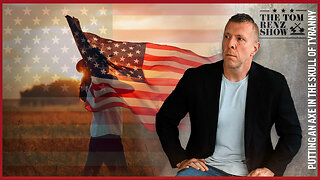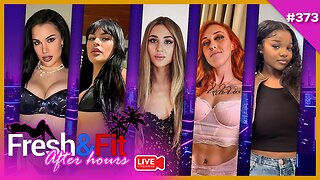Premium Only Content

EASY Light Painting Photography Orb Tutorial #shorts
So I decided to experiment with another type of painting… light painting! What do you think? You can learn how to create amazing light paintings in this short tutorial I made. I'll show you how to paint an electrical orb effect in two minutes and add some vibrant colour to the surround areas.
I posted the final photos here: https://watercolourmentor.com/from-watercolour-to-light-painting/
Since I was a kid, I’ve had an interest in electronics and flashlights. I remember my mum taking me to Dick Smith Electronics over in Perth to buy capacitors and resistors for different projects I was working on. I’ve been thinking of ways to integrate that side of things with my art.
Anyway, I reached out to @Ledlenser Australiato see if they wanted to collaborate. Over September, I ended up creating a series of short light painting videos and photographs! Ledlenser kindly provided me with two of their flashlights, the P6R Core QC and P7R Work UV. I used both for these shots (and upcoming videos). I own the P17 and used to own the P7 until it was stolen from my car, so thought it’d be fun to try out some of their newer lights.
So, what is light painting? It’s a photography technique where you use different light sources and tools to colour, draw and paint a subject. This can be a portrait, landscape or everyday object.
I was drawn to light painting because of one similarity it shares with watercolour painting. The element of surprise! You never know exactly how it’ll turn out (good or bad). I found it strangely exciting waiting for the camera to process each exposure.
To create a light painting, you’ll need a camera, a light source (I use a flashlight) and a dark area.
Camera settings:
ISO 50-100
F10-18
Exposure 30 seconds+
Basically, you want a long exposure time paired with a low aperture and ISO. This is to ensure the camera captures the movements and areas that are lit up. Having the ISO on lower reduces grain and also makes sure the photo isn’t over-exposed due to the duration of the shot.
Have any questions? Let me know what you think below! -Darren
► My Shop (I recommend these materials):
https://www.amazon.com/shop/watercolourmentor
-
 1:10:15
1:10:15
MTNTOUGH Fitness Lab
23 hours ago"My Baseball Career Wasn't Enough": Adam LaRoche's Life-Changing Anti-Trafficking M
6.48K2 -
 1:00:12
1:00:12
The Tom Renz Show
18 hours agoComing to America & Coming to Christ
27.4K7 -
 1:12:21
1:12:21
TheRyanMcMillanShow
23 hours ago $0.04 earnedDebbie Lee: Mother of First Navy Seal Killed In Iraq, Marc Lee - RMS 019
10K1 -
 38:05
38:05
Uncommon Sense In Current Times
15 hours ago $0.05 earnedIs Israel Being Forced Into a Bad Deal? David Rubin Exposes the Truth | Uncommon Sense
9.49K7 -

FreshandFit
10 hours agoAfter Hours w/ Girls
118K92 -
 2:33:58
2:33:58
TimcastIRL
13 hours agoDan Bongino ACCEPTS Deputy FBI Director, SECRET NSA CHATS EXPOSED w/Joey Mannarino | Timcast IRL
185K102 -
 1:09:33
1:09:33
Glenn Greenwald
17 hours agoMichael Tracey Reports from CPAC: Exclusive Interviews with Liz Truss, Steve Bannon & More | SYSTEM UPDATE #412
135K95 -
 56:02
56:02
Sarah Westall
13 hours agoBiohacking & Peptides: Weight loss, Anti-Aging & Performance – Myth vs Reality w/ Dr. Diane Kazer
76.3K33 -
 11:22
11:22
Bearing
1 day ago"Anxious & Confused" Federal Workers FREAK OUT Over DOGE Efficiency Email 💥
100K79 -
 1:31:20
1:31:20
Flyover Conservatives
1 day agoUS STOCK MARKET: Sinking Ship - Dr. Kirk Elliott; How I Fought Back Against Woke Schools & Stopped Gender Bathrooms - Stacy Washington | FOC Show
90.9K5